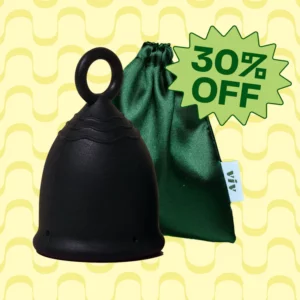Affiliate links below.
Being greener and eco-friendlier isn’t hard. It’s more of a conscious decision every step of the way.
We’ve all consumed a lot of products and plastic and waste. We’re all also growing older and hopefully wiser. In fact, I bet you know the word “sustainability” kind of means nothing. But it is one of those words that normies (regular people) understand; it’s similar to “eco-friendly” or “green.” Industry people are going to roll their eyes, but for the sake of us regular folks, these words at least convey a philosophy and feeling of being less wasteful, more thoughtful in our daily consumption of things.
Beginning your sustainability (or low waste or zero waste or eco-conscious) journey can feel major, but it’s all about taking small, doable steps. You don’t have to overhaul your entire life overnight. Instead, you start by making conscious choices that can lead to positive changes over time. It’s like diet and exercise – you don’t just go all in and run 26.2 miles on Day 1. You build up to it. You get rest days. You may falter; and that’s ok. The goal is to keep trying to be less wasteful and be more conscious of our resource consumption.
Here are a few ways to consider when you start building that sustainability mindset/muscle:
- Reduce Consumption First
Before you buy that shampoo bar or eco-friendly kitchen sponge, focus on using what you have first. This means evaluating your current habits and finding areas where you can cut back. Here are a few ideas:- Mindful Shopping: Make a shopping list and stick to it. (Hard but we can always try.)
- Digital Over Paper: This includes opting for digital receipts, ebooks, and online subscriptions.
- Minimize Waste: Plan your meals to reduce food waste. This one is nearly impossible for me. I will always lose this challenge because I don’t like thinking about meal planning.
- Reuse What You Already Have
Reusing items not only reduces waste but also saves money. Before you rush to buy eco-friendly products, look around your home and see what you can repurpose:- Glass Jars: Clean and reuse glass jars for storage, as vases, or drinking glasses.
- Cloth Bags: I know you have a ton of reusable grocery bags and totes.
- Containers: Repurpose plastic containers for organizing small items around the house. I found a small plastic tray from the Hubs’ childhood bedroom, and I now use it for holding dirty napkins before I throw them in the wash.
- Make Sustainable Swaps
Once you’ve reduced and reused, consider making swaps that support a greener lifestyle. Start with simple changes:- Reusable Water Bottles: It’s a known fact that bottled water is a scam. Sometimes it’s impossible not to pick one up – venues don’t allow you to bring water, etc, and you do the best you can with this one.
- Eco-Friendly Cleaning Products: Make your own cleaning solutions with natural ingredients like vinegar and baking soda or pick up something from your refillery or eco store after you’ve used up what you have.
- Sustainable Fashion: Wear what you have. Shop second-hand or used. More cotton, less polyester is the goal.
- Mindful Consumption
Ask yourself if you truly need an item before purchasing it. Consider its lifespan and environmental impact. One of things I’m thinking of already are class rewards. I tend to order stuff (plastic knick-knacks) to send to teachers so they can give them out as rewards. Not this coming year. - Get Involved and Stay Informed
Staying informed can help you make better choices. Join local sustainability groups, subscribe to zero waste and sustainability newsletters, participate in community clean-ups, and follow blogs and social media accounts focused on zero waste, reducing plastic use, slow fashion and/or green living.
This whole sustainability thing is an ongoing journey of making conscious choices and gradual changes. By reducing consumption, reusing what you have, and making thoughtful swaps, you can significantly reduce your environmental impact on the earth.
Every small step counts!








Leave a Reply